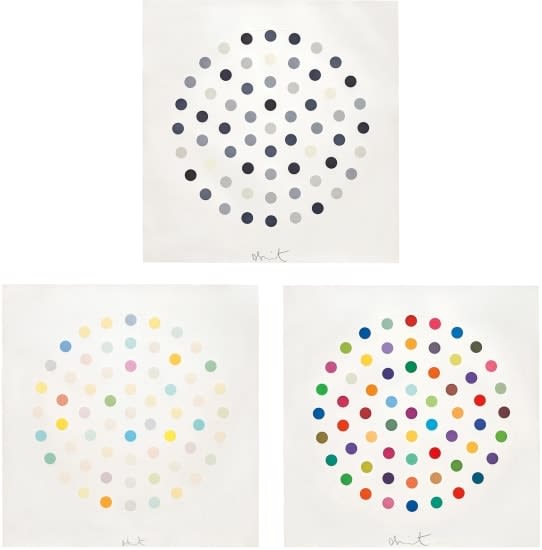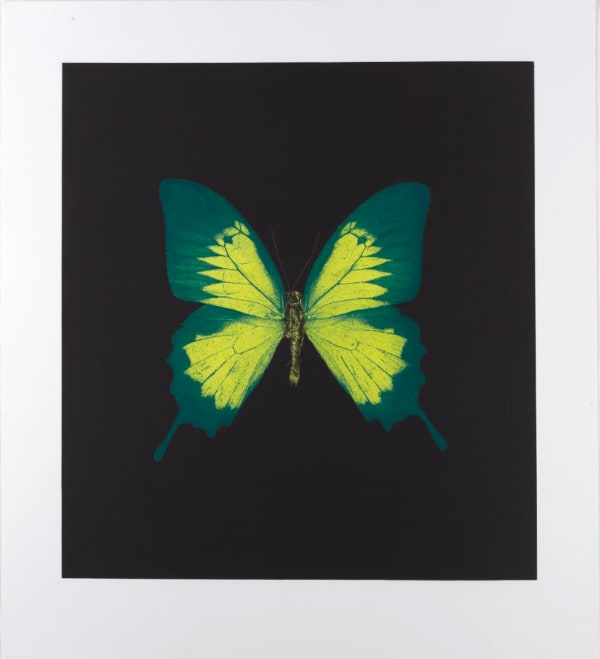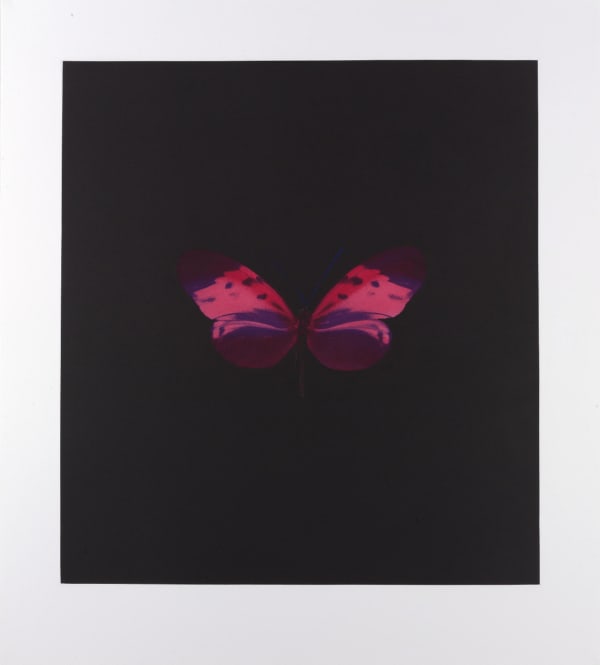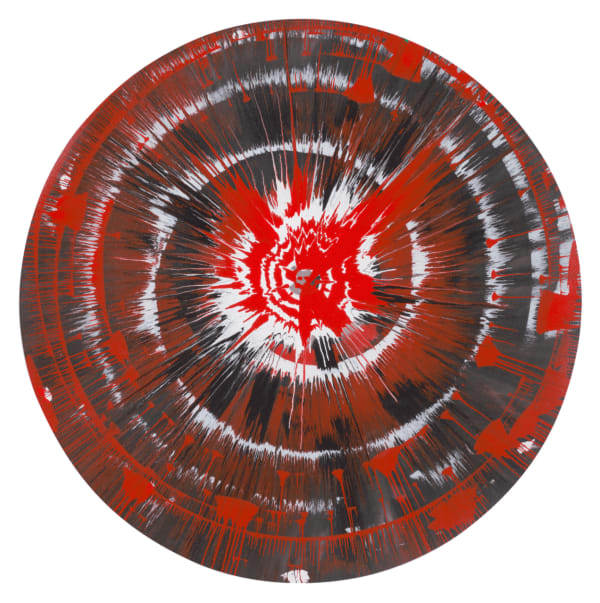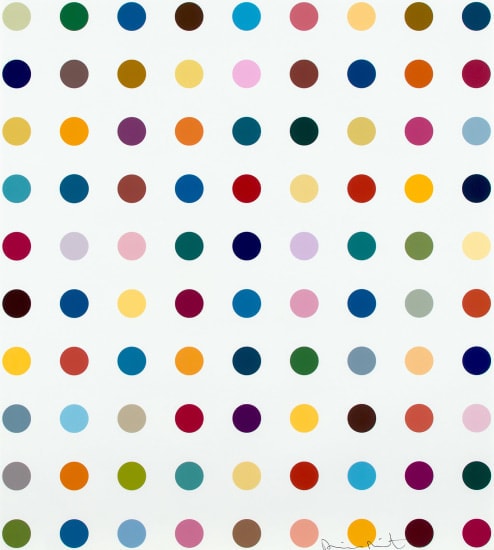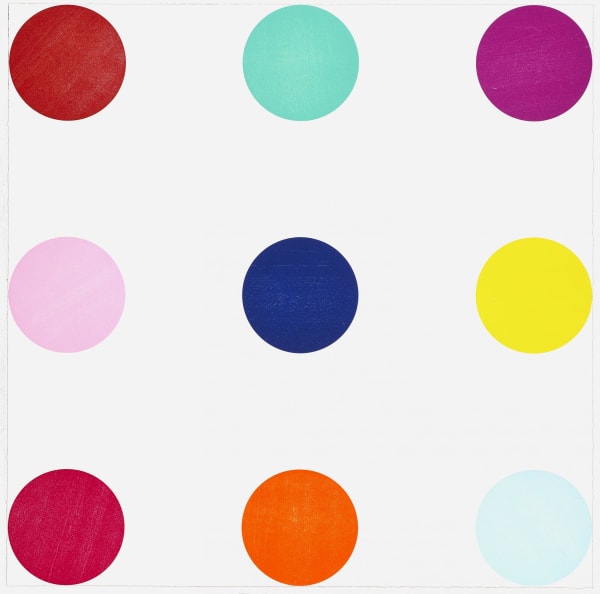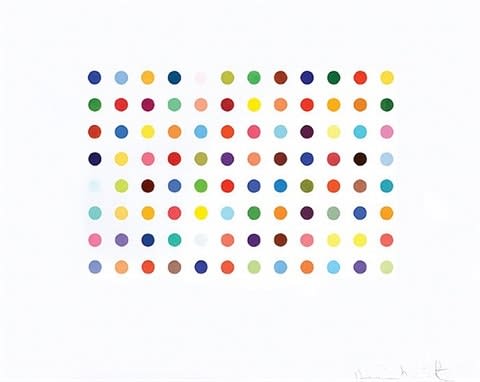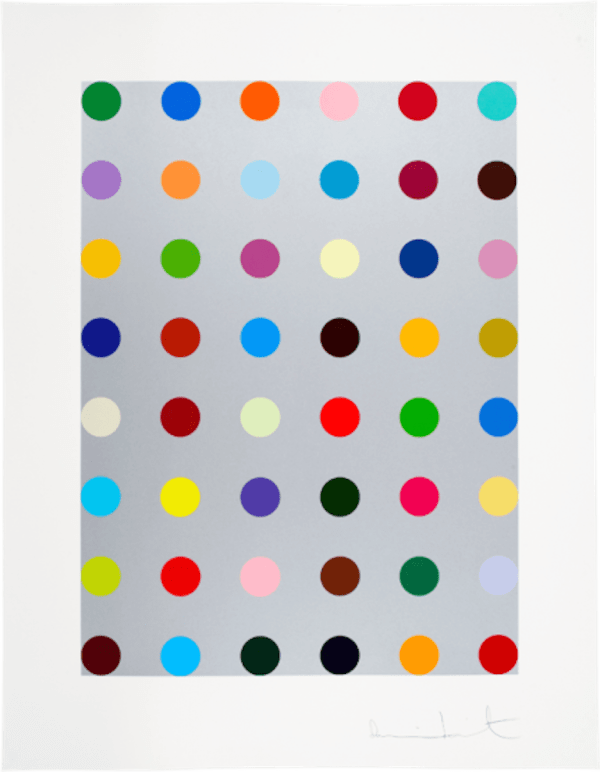In Beauty in Chaos, we enter Damien Hirst’s world of controlled chaos, where vibrant spins, regimented spots, and delicate butterflies converge to explore life’s beautiful unpredictability. The Spin works harness mechanical motion and centrifugal force to fling paint across the canvas—each swirl bursting with color yet held in silent tension between spontaneity and structure. Meanwhile, the Spot prints exemplify near-scientific precision: dot after dot aligned in grids, each hue chosen and positioned with exacting care, evoking human rationality even as the sheer abundance of color teeters on sensory overload.
Then there are the butterflies—real wings arranged into kaleidoscopic patterns or affixed mid-flight—capturing the fragile boundary between life and death. They symbolize metamorphosis, spiritual transcendence, and humanity’s impulse to preserve fleeting beauty. Across these three motifs, Hirst orchestrates a dialogue between control and chance. The physics of the spin, the exactitude of the spot, and the ephemeral flight of the butterfly work in unison to create an aesthetic paradox: a meticulously ordered composition that nevertheless pulses with untamed energy.
Controlled chaos becomes both method and metaphor—an invitation to dwell in the tension between the calculated and the uncontrolled, between vibrant life and the inevitability of decay.


